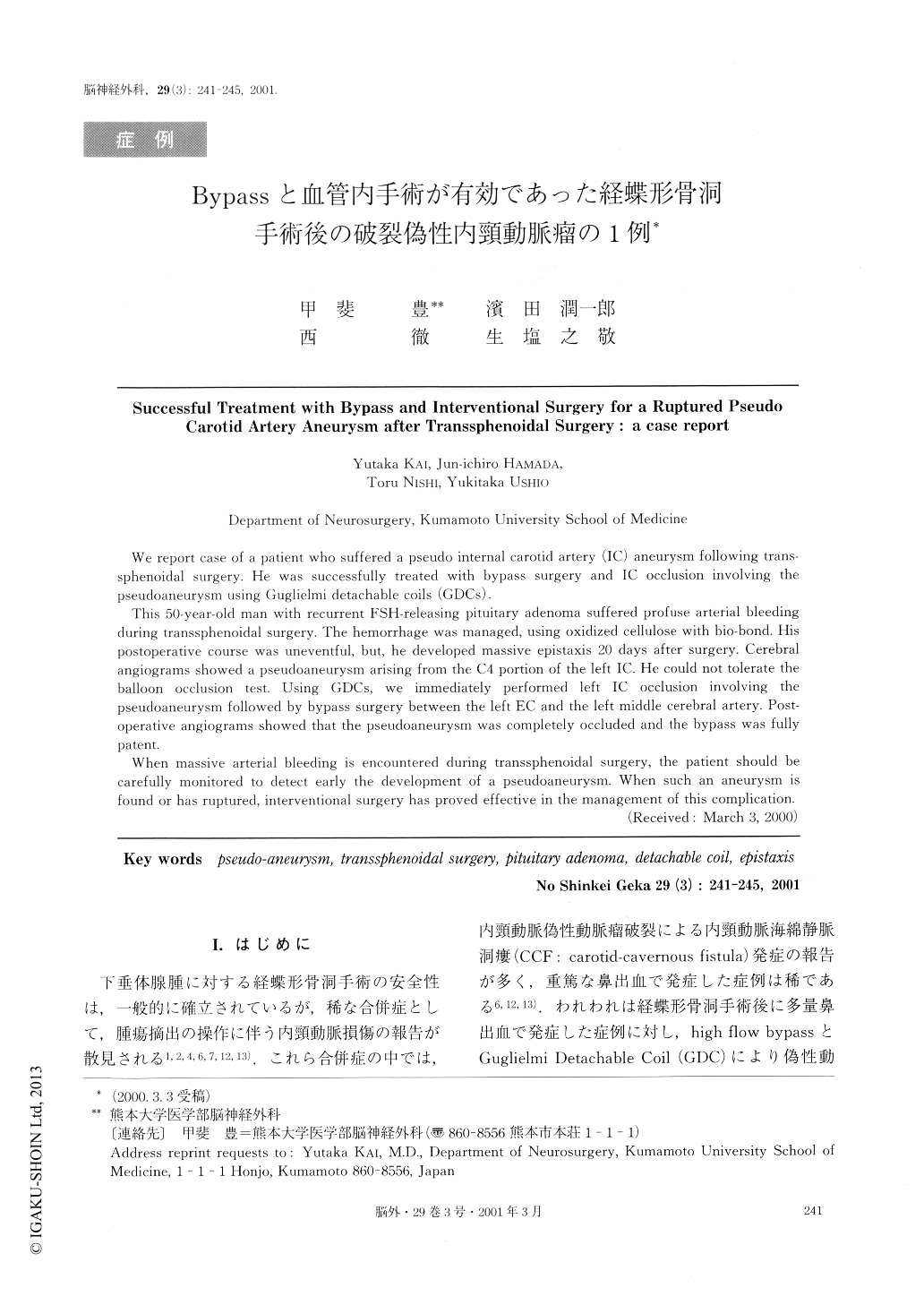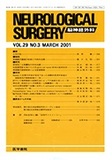Japanese
English
- 有料閲覧
- Abstract 文献概要
- 1ページ目 Look Inside
I.はじめに
下垂体腺腫に対する経蝶形骨洞手術の安全性は,一般的に確立されているが,稀な合併症として,腫瘍摘出の操作に伴う内頸動脈損傷の報告が散見される1,2,4,6,7,12,13).これら合併症の中では,内頸動脈偽性動脈瘤破裂による内頸動脈海綿静脈洞瘻(CCF:carotid-cavernous fistula)発症の報告が多く,重篤な鼻出血で発症した症例は稀である6,12,13).われわれは経蝶形骨洞手術後に多量鼻出血で発症した症例に対し,high flow bypassとGuglielmi Detachable Coil(GDC)により偽性動脈瘤を含めた内頸動脈の閉塞を行い良好な結果を得たので,文献的考察を加え報告する.
We report case of a patient who suffered a pseudo internal carotid artery (IC) aneurysm following trans-sphenoidal surgery. He was successfully treated with bypass surgery and IC occlusion involving thepseudoaneurysm using Guglielmi detachable coils (GDCs).
This 50-year-old man with recurrent FSH-releasing pituitary adenoma suffered profuse arterial bleedingduring transsphenoidal surgery. The hemorrhage was managed, using oxidized cellulose with bio-bond. Hispostoperative course was uneventful, but, he developed massive epistaxis 20 clays after surgery. Cerebralangiograms showed a pseudoaneurysm arising from the C4 portion of the left IC. He could not tolerate theballoon occlusion test. Using GDCs, we immediately performed left IC occlusion involving thepseudoaneurysm followed by bypass surgery between the left EC and the left middle cerebral artery. Post-operative angiograms showed that the pseudoaneurysm was completely occluded and the bypass was fullypatent.
When massive arterial bleeding is encountered during transsphenoidal surgery, the patient should becarefully monitored to detect early the development of a pseudoaneurysm. When such an aneurysm isfound or has ruptured, interventional surgery has proved effective in the management of this complication.

Copyright © 2001, Igaku-Shoin Ltd. All rights reserved.


